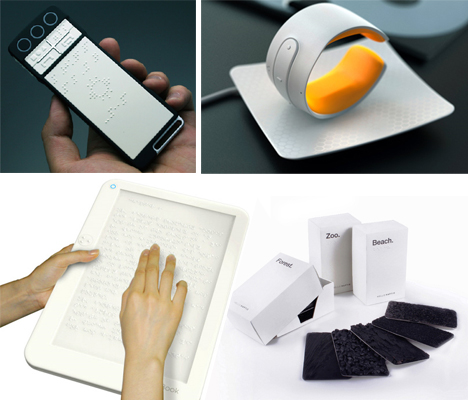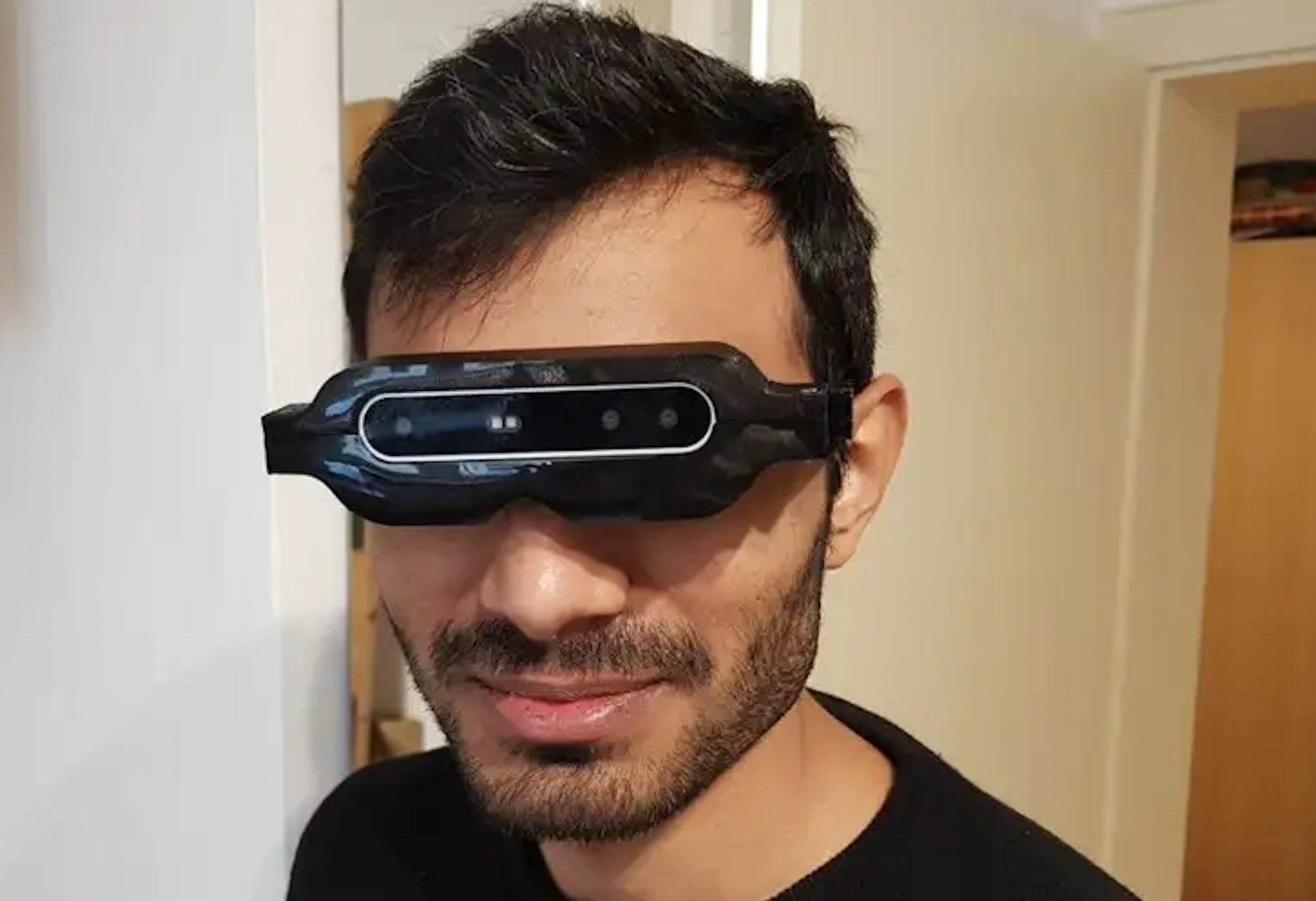Enhance Accessibility with Braille Tools and Notetakers
Enhance Accessibility with Braille Tools and Notetakers
Blog Article
Enhancing Lives With Advanced Assistive Gadgets for the Blind
The assimilation of sophisticated assistive gadgets for the blind is changing just how individuals experience their surroundings and connect with their areas. Advancements such as augmented truth smart glasses and sophisticated electronic travel aids not just assist in navigating but additionally enhance general lifestyle. These technologies cultivate a feeling of autonomy and self-efficacy among individuals, allowing them to carry out everyday jobs with newly found self-confidence. However, the effects of these advancements extend beyond simple performance; they challenge social assumptions of impairment and self-reliance. What does this development suggest for the future of assistive technology and its role in empowering individuals?
Review of Assistive Instruments
Assistive devices for the blind incorporate a varied variety of tools and innovations designed to enhance independence and boost the lifestyle for people with visual impairments. These gadgets accommodate numerous demands, from navigation and movement to interaction and day-to-day job management.
One of the key classifications of assistive gadgets includes flexibility help, such as white walking canes and guide pet dogs, which assist customers browse their environments securely. Digital travel help, equipped with sensing units and audio responses, additionally play a significant duty in wheelchair enhancement.
In addition, gadgets that assist with day-to-day living tasks, such as adaptive cooking area devices, Braille tags, and talking watches, equip people to execute tasks independently. Interaction help, including display viewers and Braille display screens, facilitate accessibility to information and enable individuals to engage effectively with the electronic world.
In addition, low-tech options like multiplying glasses and large-print products stay crucial for many customers. Jointly, these assistive tools offer not just as practical devices but additionally as crucial enablers of freedom, cultivating higher involvement in a globe that frequently prioritizes sighted experiences. Their integration into life is vital for advertising inclusivity and improving overall wellness for those with aesthetic disabilities.
Ingenious Technologies being used
Innovation in technology has actually considerably changed the landscape of tools readily available for people with aesthetic disabilities. Amongst one of the most noteworthy advancements are smart glasses integrated with enhanced reality, which supply real-time navigating help and object recognition. These gadgets take advantage of progressed electronic cameras and man-made intelligence to deliver auditory hints, improving the customer's spatial awareness and autonomy.
Furthermore, mobile applications have arised as powerful sources, enabling customers to determine money, reviewed message aloud, and browse unfamiliar environments via verbal directions. Devices such as Braille displays and refreshable Braille devices proceed to advance, using smooth connection with computers and smartphones, thereby boosting interaction and access to details.
Wearable innovation, including smartwatches geared up with voice-activated features, even more equips customers by assisting in quick accessibility to notifications and notifies without calling for visual interaction. Tactile maps and 3D printing are likewise gaining grip, providing substantial representations of rooms that help in orientation and mobility training.
Collectively, these innovative technologies not just improve the lives of aesthetically impaired people yet additionally foster better freedom, inclusivity, and interaction with the wider neighborhood, thus improving understandings of availability. (Wearable technology for low vision)
Personal Stories of Empowerment
Empowerment commonly emerges from personal experiences that highlight the transformative influence of innovation on people with aesthetic disabilities. Take, for example, the story of Sarah, a young artist who regained her passion for painting with using a smart walking stick outfitted with obstacle discovery. This tool not just promoted her wheelchair but instilled a newfound self-confidence, enabling her to navigate public areas independently and seek her creative ventures.

These stories highlight the extensive results that progressed assistive tools can carry life. By allowing people to get over barriers, modern technology cultivates a feeling of freedom and self-worth. Such empowerment stories work as a testimony to the possibility of innovation, illustrating exactly how the right devices can considerably improve lifestyle and open doors to new opportunities for those with aesthetic problems.
Benefits of Advanced Solutions
Just how can advanced services fundamentally boost the lives of individuals with visual problems? The combination of sophisticated modern technology right into assistive devices considerably transforms day-to-day experiences for those affected by vision loss. These sophisticated remedies provide extraordinary autonomy, enabling individuals to browse their settings with self-confidence. Devices such as smart walking sticks visit this website outfitted with sensing units, navigation apps, and wearable technology are made to supply real-time comments, boosting spatial understanding and reducing the dangers associated with flexibility.
In addition, advanced assistive modern technologies cultivate social inclusion by helping with communication and interaction. Voice-activated tools and applications permit people to gain access to details and involve with their environments separately, damaging obstacles that formerly prevented their involvement in academic, specialist, and social settings.
In addition, the customization and adaptability of these services satisfy the diverse needs of individuals, consequently boosting their general high quality of life. Improved performance, such as item recognition and text-to-speech capacities, equips individuals with visual impairments to do tasks that they may have once discovered challenging. Eventually, progressed assistive innovations not only improve freedom and security however likewise promote self-respect and self-worth, enabling customers to lead meeting lives.
Future Trends in Assistive Technology
As modern technology proceeds to advance, the landscape of assistive devices for the blind is poised for impressive developments that will better improve access and self-reliance. Arising fads in assistive technology indicate a change toward increased assimilation of artificial intelligence (AI) and device learning, allowing devices to adjust to specific user needs in real-time. These innovations are expected to promote even more user-friendly navigation systems that can identify obstacles and give audio feedback, considerably enhancing exterior movement.
Furthermore, the growth of wearable tech, such as smart glasses equipped with enhanced fact, will certainly enable customers to get contextual info concerning their surroundings, therefore improving their spatial understanding. Furthermore, innovations in haptic technology guarantee to produce responsive feedback devices, allowing individuals to perceive info via touch, enhancing knowing and interaction with their setting.
Telecommunication advances are additionally leading the way for remote aid solutions, where skilled experts can give assistance by means of video click now clip phone calls, making sure support is readily obtainable. As these fads unfold, the future of assistive devices for the blind will definitely promote higher autonomy, empowering people to browse their globe with self-confidence and ease.

Conclusion
The integration of sophisticated assistive tools for the blind stands for a substantial development in fostering self-reliance and improving lifestyle. By utilizing ingenious technologies, these gadgets empower individuals to navigate their atmospheres with greater confidence and autonomy. As the area remains to evolve, continuous research and advancement will likely generate a lot more sophisticated options, even more changing the lived experiences of individuals with aesthetic problems and advertising a higher feeling of incorporation within culture.
The integration of innovative assistive devices for the blind is transforming how individuals experience their environments and connect with their communities. The assimilation of advanced modern technology right into assistive tools substantially changes day-to-day experiences for those influenced by vision loss.As technology continues to progress, the landscape of assistive tools for the blind is positioned for impressive innovations that will certainly better boost availability and self-reliance. Arising patterns in assistive innovation indicate a shift toward boosted combination of man-made intelligence (AI) and device learning, allowing devices to adapt to specific user requires in real-time.The integration of innovative assistive tools for the blind stands for a considerable development in cultivating freedom and boosting quality of life.
Report this page